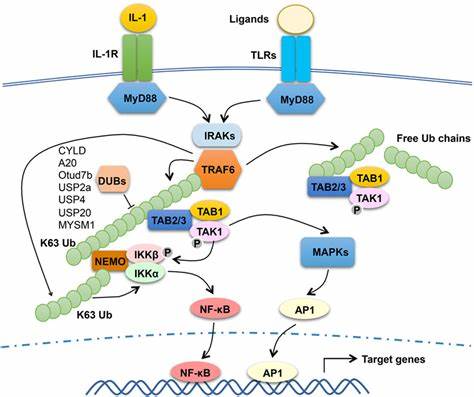TNF Receptor
Related Symbol Search List
- NGFR
- CD27
- CD40
- EDA2R
- EDAR
- Fas
- LTBR
- PGLYRP1
- RELT
- TNFRSF10A
- Tnfrsf10b
- DICER1
- TNFRSF10D
- TRAILR4
- TNFRSF11A
- TNFRSF11B
- TNFRSF12A
- TNFRSF13B
- TNFRSF13C
- HVEM
- Tnfrsf17
- Tnfrsf18
- Tnfrsf19
- TNFRSF1A
- TNFRSF1B
- DR6
- TNFRSF25
- TNFRSF4
- DcR3
- TNFRSF8
- TNFRSF9
- TNFSF9
Immunology Background
Available Resources for TNF Receptor Research
At Creative BioMart you can find a wide range of products related to TNF receptor, including recombinant proteins and other key products. In addition, we offer customized services to meet your specific requirements, ensuring you get the product you need.
In addition to our products and services, we offer a wealth of resources for your reference. Our resources cover all aspects of TNF receptor, including the involved pathways, protein function, interacting proteins, related articles, research areas, and other relevant topics. These resources will be invaluable to researchers wishing to deepen their understanding of TNF receptor and their role in physiological processes.
Our Featured Products
About TNF Receptor
TNF (Tumor Necrosis Factor) receptors are a group of cell surface receptors that bind to TNF ligands and mediate various cellular responses. They belong to the TNF receptor superfamily and play critical roles in immune regulation, inflammation, and cell survival.
Structure of TNF Receptors
TNF receptors are transmembrane proteins composed of an extracellular domain, a transmembrane domain, and an intracellular domain.
- The extracellular domain of TNF receptors contains cysteine-rich repeats, which are responsible for ligand binding. The number and arrangement of these repeats vary among different TNF receptor family members.
- The intracellular domain of TNF receptors interacts with intracellular signaling molecules, such as adapter proteins and kinases, to transmit signals into the cell upon ligand binding.
TNF Receptor Functions
Activation of TNF receptors by TNF ligands initiates various cellular responses, depending on the specific receptor and cell type involved. Some key functions of TNF receptors include:
- Immune Regulation: TNF receptors play a crucial role in immune regulation and immune cell activation. They are involved in the activation and proliferation of T cells, B cells, and antigen-presenting cells. The interaction between CD40 (a TNF receptor) and its ligand CD40L regulates B cell antibody production and T cell-dependent immune responses.
- Inflammation: TNF receptors mediate pro-inflammatory responses, promoting the production of cytokines, chemokines, and adhesion molecules. This contributes to the recruitment and activation of immune cells, tissue inflammation, and defense against pathogens.
- Cell Survival and Apoptosis: TNF receptors can exert both pro-survival and pro-apoptotic effects. Activation of TNFR1 can trigger pro-survival signaling pathways, promoting cell survival and proliferation. However, under certain conditions, TNFR1 activation can also lead to apoptosis, particularly in immune cells. The Fas receptor (CD95), another TNF receptor family member, is primarily involved in apoptosis induction upon binding to its ligand, FasL.
- Tissue Repair and Remodeling: TNF receptors, particularly TNFR2, play a role in tissue repair and remodeling processes. They contribute to angiogenesis (formation of new blood vessels), tissue regeneration, and wound healing.
- Cellular Differentiation: TNF receptors are involved in cellular differentiation processes. They participate in the differentiation of various cell types, including immune cells, endothelial cells, and mesenchymal cells.
Signaling Pathways
TNF receptors activate intracellular signaling pathways upon ligand binding, leading to the regulation of gene expression and cellular responses. The key signaling pathways include:
- NF-κB Pathway: Activation of TNF receptors can lead to the activation of the NF-κB pathway. This pathway regulates the expression of genes involved in inflammation, immune responses, cell survival, and proliferation.
- MAPK Pathway: TNF receptor activation can also activate MAPK signaling cascades, including the ERK, JNK, and p38 MAPK pathways. These pathways regulate cellular processes such as proliferation, differentiation, apoptosis, and inflammation.
- Other Signaling Pathways: TNF receptors can also interact with additional co-receptors and adaptors to activate specific downstream signaling pathways, depending on the receptor and cellular context.
Understanding the structure and functions of TNF receptors is essential for unraveling their roles in various physiological and pathological processes. Targeting TNF receptors or their ligands has significant therapeutic implications, particularly in the field of immunology and inflammatory diseases. Ongoing research continues to enhance our understanding of TNF receptor signaling and identify potential therapeutic interventions.
 Fig.1 The function and regulation of tumor necrosis factor receptor-associated factor (TRAF)6 in MyD88 signaling pathway. (Jian-Hong S, et al., 2018)
Fig.1 The function and regulation of tumor necrosis factor receptor-associated factor (TRAF)6 in MyD88 signaling pathway. (Jian-Hong S, et al., 2018)
If you have any questions, requirements, or cooperation intentions, please feel free to contact us. We very much look forward to working with you and helping you achieve research and commercial success.
Reference:
- Jian-Hong S, Shao-Cong S. Tumor Necrosis Factor Receptor-Associated Factor Regulation of Nuclear Factor κB and Mitogen-Activated Protein Kinase Pathways[J]. Frontiers in Immunology, 2018, 9:1849-. DOI:10.3389/fimmu.2018.01849.

